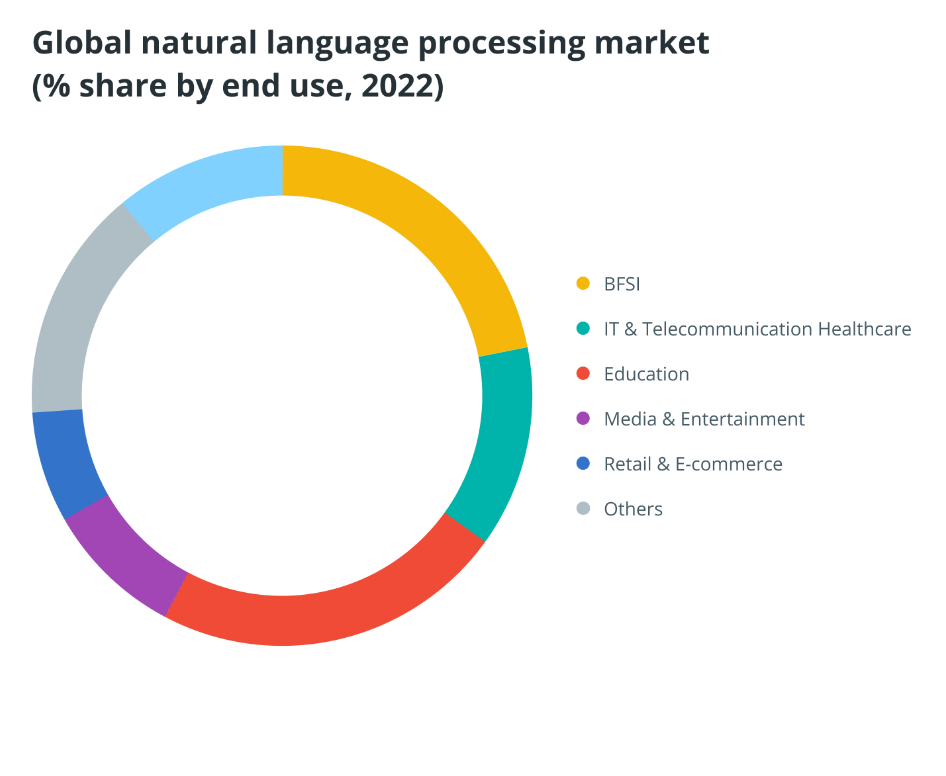In the annals of technological evolution, few innovations have promised as much transformative potential as Artificial Intelligence (AI). As we stand on the cusp of 2023, the AI landscape is not just evolving—it’s revolutionizing the way we think, work, and innovate. From the ubiquity of AI-driven tools like ChatGPT, Google Bard, and IBM Watson to the burgeoning sectors they’re influencing, AI is the linchpin of modern technological progress.
The Global AI Landscape: A Brief Overview
The AI market’s growth trajectory over the past few years has been nothing short of meteoric. McKinsey, a global management consulting powerhouse, has shed light on this phenomenon. Their research indicates that a staggering 50% to 60% of organizations globally have seamlessly integrated AI-centric tools into their operational fabric. This number is not static; it’s poised for an upward surge, emphasizing AI’s growing footprint in the global business ecosystem.
Forbes, a vanguard in business journalism, has spotlighted AI as a sector experiencing unparalleled growth. The numbers are compelling: the AI industry’s market capitalization is on track to grow at a compound annual growth rate (CAGR) of 37.3% throughout this decade. By its end, the sector could be valued at an astounding $1.81 trillion.
This growth isn’t arbitrary—it’s anchored in technological advancements, notably generative AI and natural language processing (NLP). With such momentum, experts predict that AI’s contribution to the global economy might reach a jaw-dropping $15.7 trillion by 2030. To put this in perspective, that’s a figure surpassing the combined GDP of economic behemoths like India and China.

Diving Deeper: The AI Trends Reshaping Our World
1. The Surge of AI Assistants
The technological zeitgeist of our era is characterized by the proliferation of AI assistants. As the tech paradigm continues its relentless expansion, AI assistants are emerging as the torchbearers of this revolution. Paweł Andruszkiewicz, COO of VAIOT, a trailblazer in AI-driven digital services, envisions a world where AI doesn’t just complement but transforms sectors like legal services, public administration, and citizen services.
He elaborates on this vision, “Imagine a world where legal services, often perceived as daunting, inaccessible, or prohibitively expensive, become universally accessible. AI Assistants, with their omnipresent availability on mobile devices, are demystifying these domains, making them accessible and affordable for all.”
But the potential of AI assistants isn’t confined to just one sector. Andruszkiewicz is optimistic about AI’s potential to revolutionize a plethora of areas. From streamlining formal legal documentation to facilitating digital payments and even demystifying intricate technologies like blockchain and smart contracts, the possibilities are endless. He emphasizes, “With AI, intricate tasks on the blockchain become effortless. Users can simply articulate their objectives, and the AI assistant handles the complexities.”
2. AI’s Growing Footprint in Fortune 500 Companies
The corporate world is no stranger to innovation. But the pace at which AI is being adopted and integrated is unprecedented. Miguel Machado, the visionary CEO of Keenfolks, an AI consultancy, foresees a future where AI’s pace of innovation will leave many astounded. Citing the success of OpenAI’s ChatGPT, which amassed over 100 million users shortly after its launch in March 2022, he believes that Fortune 500 companies will rapidly adopt and refine AI-driven strategies.
Machado’s vision isn’t just about adoption—it’s about transformation. He believes that the ease of experimenting with AI will foster innovation, enabling Fortune 500 companies to swiftly iterate and refine their AI-driven strategies. He says, “Communities will play a pivotal role, harnessing the knowledge of language models to create platforms that facilitate collaborative learning and skill enhancement.”
3. The Ascendancy of Generative AI
Generative AI stands distinct from traditional predictive models. While the latter emphasizes making predictions based on existing datasets, generative AI is all about creation. It harnesses machine learning and deep learning to generate original content. This technology has been instrumental in creating texts, images, and multimedia content.
Henry Ajder, a renowned generative AI expert, believes, “The generative revolution is just beginning. The future will see synthetic media becoming commonplace, driving innovations in entertainment, education, and accessibility.”
4. The Evolution of Natural Language Processing (NLP)
NLP is revolutionizing human-computer interactions. By enabling machines to comprehend and respond to human language authentically, NLP is bridging the communication gap between humans and machines.

Grand View Research’s recent report underscores NLP’s potential, forecasting a CAGR of 40.4% from 2023 to 2030, culminating in a valuation of $439.85 billion.
5. AI’s Pioneering Role in Healthcare
Healthcare is on the cusp of an AI-driven transformation. From diagnosis to treatment, AI’s influence is pervasive. The integration of machine learning in drug discovery is projected to reach a staggering $4 billion by 2027. Furthermore, over half of American healthcare providers are either already utilizing or planning to deploy AI tools in their medical processes.
Conclusion
As we navigate a future dominated by AI, machine learning, deep learning, and NLP, it’s evident that these technologies will permeate various industries, heralding a more digitized and automated era. The AI revolution is not just on the horizon; it’s here, and it’s transformative.







